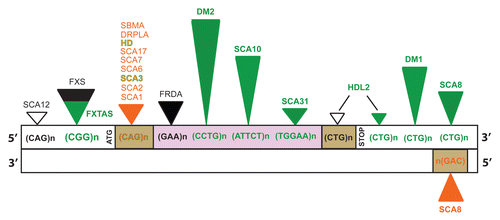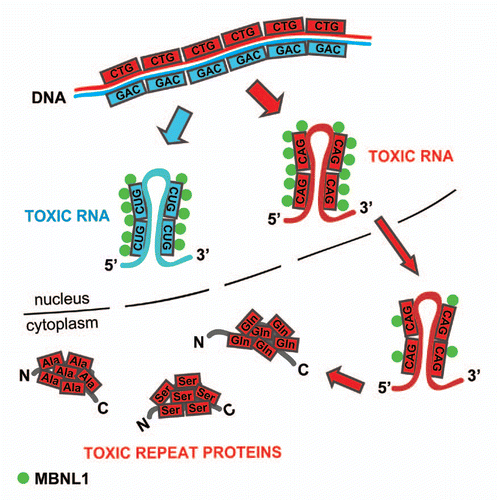Figures & data
Figure 1 Localization of simple repetitive sequences and their association with human neurodegenerative disorders. Green triangles represent RNA gain-of-function; black triangles, protein loss-of-function; orange triangles, protein gain-of-function; empty triangles, an unknown mechanism; the height of triangles corresponds roughly to repeat expansion size; brown boxes represent protein coding regions; purple box, intron; white boxes, 5′UTR and 3′UTR.

Figure 2 Nuclear toxicity of expanded CAG repeat RNA. Transcript containing CAG repeat expansions (red) is stopped over in the nucleus where it forms MBNL1-positive ribonucleoprotein aggregates that resemble features of mutant CUG repeat RNA (blue). The effect of toxic gain-of-function of CAG repeats is extended in the cytoplasm where the mutant RNA expresses polyglutamine through canonical translation and may also undergo non-ATG translation into polyserine and polyalanine expansion proteins.
